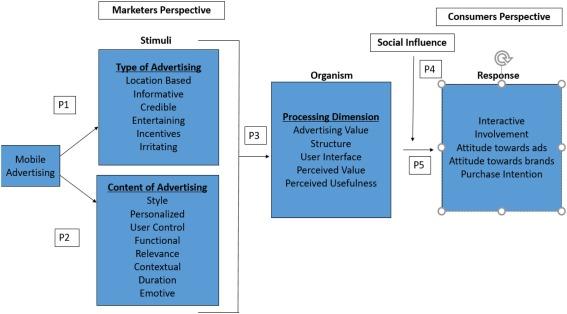Future-Proofing Education: Essential Strategies for Forward-Thinking Policymakers
In a rapidly changing world, education systems must adapt and evolve to meet the challenges of tomorrow.forward-thinking policymakers play a critical role in future-proofing education, ensuring that students acquire the skills necessary to thrive in an uncertain future. In this article, we’ll explore essential strategies for building resilient, adaptable, and innovative education systems, highlight tangible benefits, and offer practical insights for implementation.
Why Future-Proofing Education Is Crucial
Today’s education landscape is shaped by technology, globalization, and frequent shifts in workforce demands. Future-proofing education empowers learners to navigate these changes with confidence, fostering a culture of lifelong learning, adaptability, and innovation. Policymakers must anticipate emerging trends and equip schools with the frameworks needed for sustained success.
- Technological Advancement: AI, automation, robotics, and data science are transforming the workplace.
- Changing Skill Requirements: Employers increasingly value soft skills, critical thinking, and digital literacy alongside conventional knowledge.
- Globalization: Students compete and collaborate on a global scale, requiring cross-cultural competencies.
- Societal Challenges: Climate change, health issues, and ethical dilemmas must be addressed through education.
Key Strategies to Future-Proof Education Systems
1. Embed 21st Century skills Throughout Curriculum
Policymakers should advocate for curricula that integrate critical thinking, creativity, interaction, and collaboration. Embedding these 21st-century skills prepares students for the demands of future jobs and civic life.
- Project-based learning and inquiry-driven tasks
- Interdisciplinary approaches connecting STEM and humanities
- Real-world problem-solving activities
2. Promote Digital Literacy and Responsible Technology Use
As technology becomes ubiquitous, digital fluency is no longer optional. Forward-thinking policymakers should prioritize access to modern devices, robust internet, and up-to-date software within schools. But more importantly, they should encourage responsible and ethical technology use.
- Regular teacher training on new digital tools
- Cybersecurity and online safety education integrated into lessons
- Support for blended and personalized learning models
3. Foster Lifelong Learning and versatility
education shouldn’t end with graduation. Encourage policies that promote lifelong learning through adult education,micro-credentialing,and online coursework. Flexible pathways allow learners to upskill and reskill as needed throughout their careers.
- Partnerships with universities, industry, and online platforms
- Recognition of prior learning and non-formal education
- Continuous professional progress for educators
4. Prioritize Equity, Inclusion, and Accessibility
Inclusive policies ensure all students receive an excellent education, irrespective of background or ability. Equity in education means targeted resources for underserved communities and support for diverse learning needs.
- Universal access to digital resources
- Multilingual and culturally responsive curricula
- Support for students with disabilities through adaptive technologies
5. Embrace Data-Driven Decision Making
Leverage data analytics to inform policy, track student outcomes, and personalize instruction. Forward-thinking leaders use evidence-based strategies for continuous enhancement.
- Regular evaluation of programs and policies
- Public sharing of findings to build trust and clarity
- Use of learning analytics to bridge achievement gaps
Benefits of Future-Proofing Education
Implementing strategies for future-proofing education has lasting positive impacts:
- Better Prepared Graduates: Students gain relevant skills to meet future workforce demands.
- Economic Growth: A skilled population drives innovation, entrepreneurship, and productivity.
- Social Cohesion: Education systems that value inclusivity build stronger, more resilient communities.
- Global Competitiveness: Future-ready education ensures countries can compete internationally.
case Studies: Forward-Thinking Education Policies in Action
Finland’s Phenomenon-Based Learning
Finland is renowned for its progressive education system. Their move towards phenomenon-based learning breaks down traditional subject barriers, encouraging students to solve complex, real-world problems using interdisciplinary thinking. Teachers collaborate to design cross-cutting projects, giving students deeper engagement and autonomy in learning.
Singapore’s Digital Literacy Conversion
singapore’s “Masterplan for ICT in Education” positions technology at the heart of learning. The government invests in regular teacher training, modern infrastructure, and partnerships with tech companies to ensure students are equipped to succeed in a digital world. These efforts have made singapore a benchmark for digital literacy strategies globally.
Canada’s Inclusive education Model
Canada’s education policies emphasize equity and inclusion, supporting diverse student populations, prioritizing Indigenous education, and funding special needs resources. their collaborative approach—engaging community stakeholders—ensures policies respond to local contexts and needs.
Practical tips for Policymakers
- Engage Stakeholders: hold regular consultations with teachers, students, and parents to understand needs.
- Pilot Innovative Models: Start with small-scale projects before scaling up.
- monitor Global Trends: Stay informed about educational innovations worldwide.
- Invest in Teacher Development: Equip educators with the skills and resources to embrace new methodologies.
- Ensure Policy Flexibility: Build in room to adapt policies as technologies and societal needs change.
- Champion Equity: Target resources for underrepresented groups and monitor progress.
First-Hand Experience: insights from Implementing Future-Ready Policies
many education leaders share how future-proofing efforts have reenergized their schools and communities. For instance, implementing digital literacy across the curriculum has:
- Increased student engagement through interactive learning tools.
- Reduced achievement gaps by offering personalized support.
- Fostered collaboration with industry partners, enabling students to work on real projects.
Educators emphasize the importance of ongoing professional development and collaboration. One principal shared, “Future-proofing our school isn’t about having the latest technology—it’s about cultivating a mindset that embraces change and puts learners first.”
Conclusion: Shaping the Future with Progressive Education Policies
The world will never stop changing,but education can be a powerful force for stability,equity,and prospect. By adopting strategies to future-proof education, forward-thinking policymakers ensure that schools remain strongholds of innovation and enlightenment.
Investing in 21st-century skills, digital literacy, inclusivity, and lifelong learning builds resilience not just for students, but for entire societies. As you shape policy for the future, prioritize adaptability, collaboration, and equity—these are the hallmarks of an education system fit for the challenges and possibilities of tomorrow.

